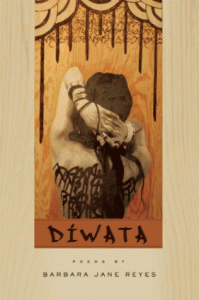
Diwata by Barbara Jane Reyes | BOA Editions 2010 | $16
In Poeta in San Francisco, Barbara Jane Reyes’ previous book, diwata was someone “elders say” had once “walked on earth” before the “the nailed god came” (30). These are the traces and rumors from which the titular Diwata of her latest book is resurrected. Then, like slippery oral art, like slips of the tongue, creation stories about men, women, and diwata—a god or spirit in Philippine mythology—are made up and told again and again. The poems in Diwata draw also on, and retell, Judeo-Christian creation narratives, introduced and enforced in the Philippines by the Spanish colonial regime. These retellings of myths and folk tales become a modality through which ahistory is rendered into history, history itself is investigated, and variations of diwatas, their quarries, and their hunters are revealed as inhabiting multiple narrative, linguistic, and cultural sites.
A globe our size, where migrations, displacements, and diasporas have become fairly common, and networked space-time has become a given for its globalized areas, is increasingly in need of transnational, translingual, transcultural mythologies. Diwata is one such transmission, in English, Spanish, and Tagalog. While most poems in the book take the form of story, it also has songs, couplets, pantoums that pick up the motifs of repetition and variation, creating a sinuous overlapping sonic rhythm.
Diwata inhabits many temporalities: it goes back in time before time and to the pre-colonial time and the colonial time; it stays in once upon a time and also strays in the present. By de-colonizing time from its linear, industrial, western model, it recuperates and liberates mythic, folkloric, and indigenous entities historically demonized and suppressed by the Catholic church and the Spanish colonial administration. The deep time of myth and folklore in Diwata is not static; rather, it is like static, a kind of oracular interference that sharpens the reader’s awareness of acts of wounding as well as acts of resistance performed during Philippines’ colonization, first by Spain and then by the USA.
